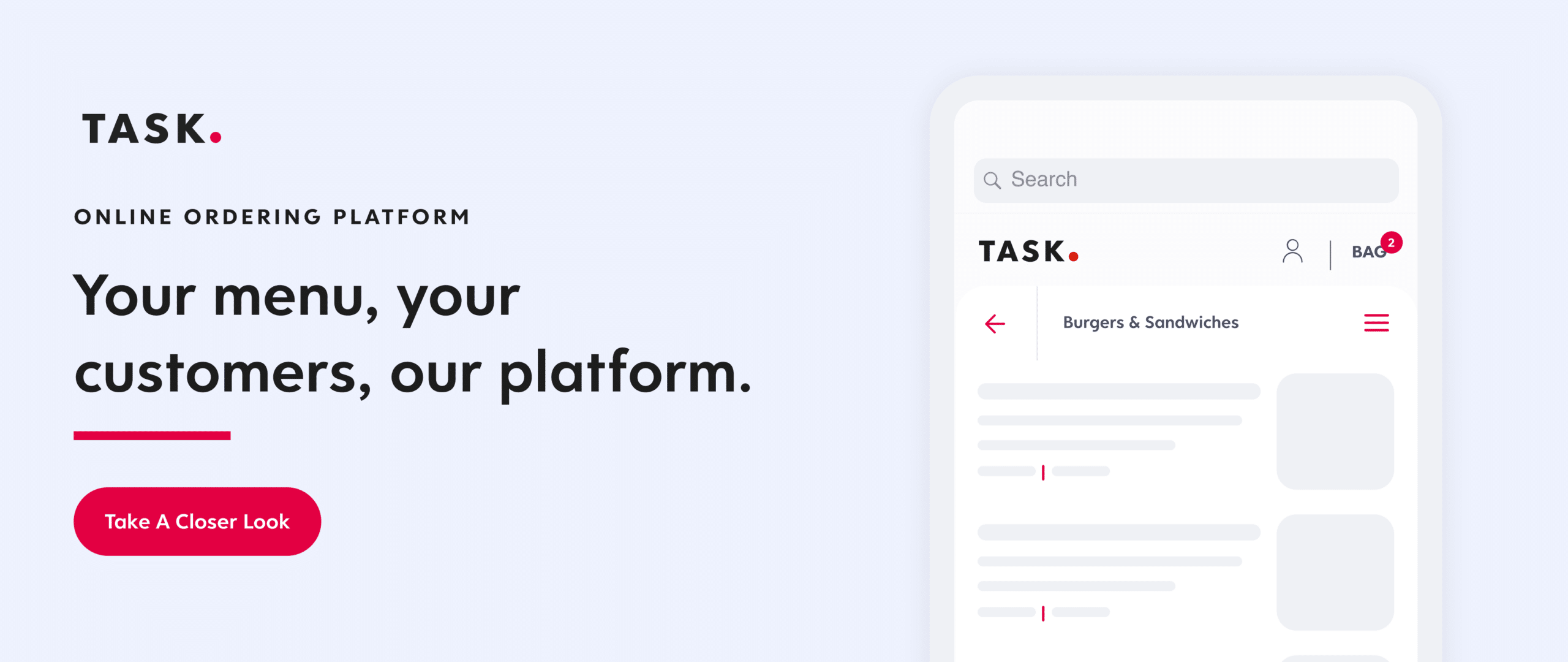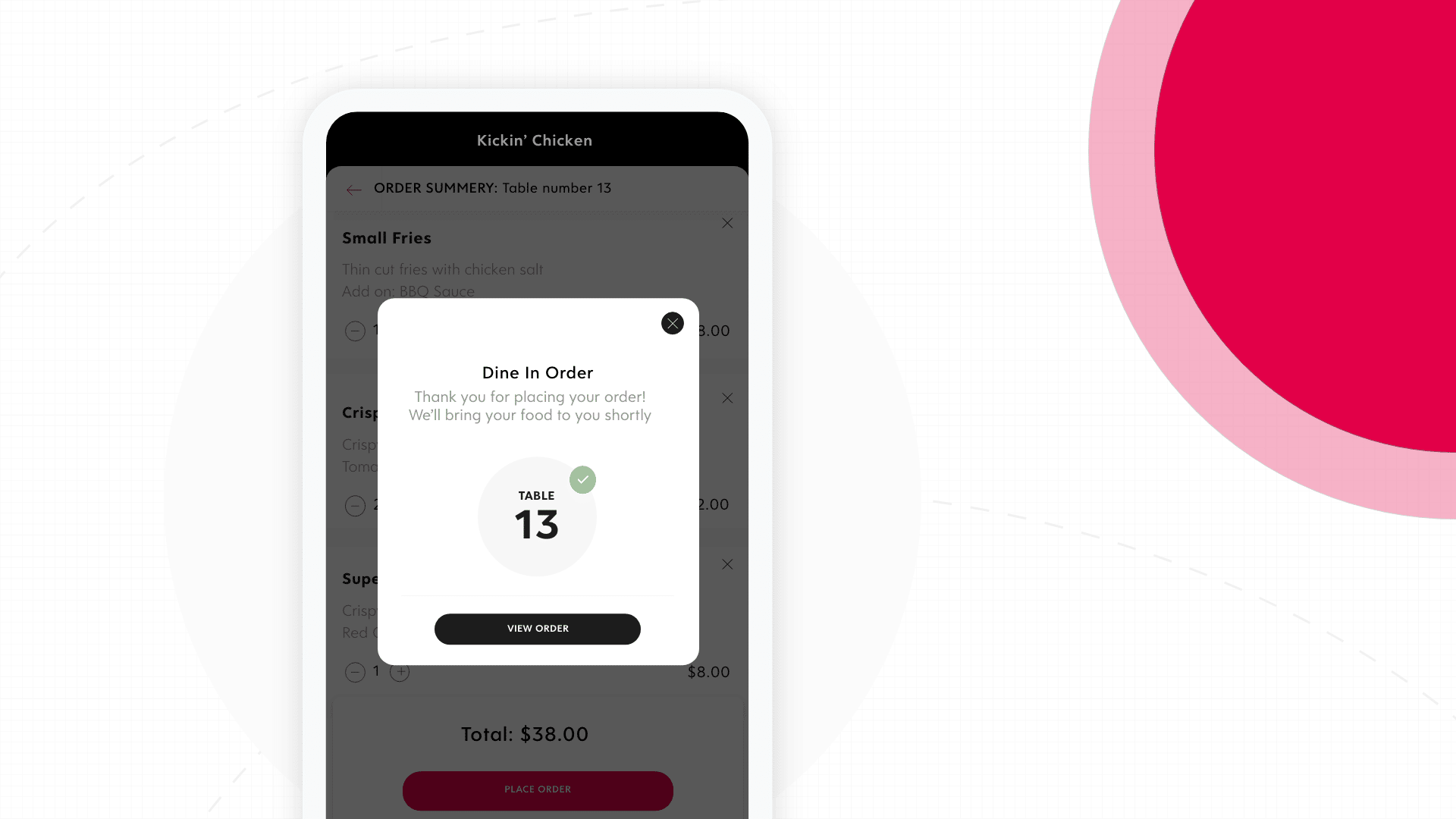It’s a changing world for hospitality businesses. The demand for faster, more convenient ordering, delivery, and payment options is altering the focus from dine-in experiences to digital customer interaction.
To provide the best possible customer experience while also optimizing operations and revenue, quick-service restaurants (QSRs) should focus on improving their digital services across a gamut of points.
Today, online ordering is more than a digital menu with mobile order and pay. Each detail – from how users pay, use location services to get the best experience, request changes and vary their orders, take advantage of the latest deal, get personalized recommendations, and review their experience – all contribute to their experience.
It takes a holistic approach to get all this right. Here are just a few things to consider while developing a digital experience – and why mobile order and payment is the key to getting ahead.
Embrace the changes brought by Covid
In many ways, the pandemic has been detrimental to the hospitality industry as a whole. Social distancing, forced closures, and labor shortages have paved a difficult path for many food-service businesses, forcing them to re-evaluate how they succeed in their markets.
However, Covid has also instigated some positive changes in how customers are able to interact with brands they love.
Normalizing mobile ordering, contactless payment, and QR code menus have broadened opportunities to personalize and improve the digital customer experience.
Rather than trying to recreate a pre-pandemic experience, successful QSRs are leaning into some pandemic-inspired changes that have proven beneficial to both businesses and customers
An ideological shift – and impressive gains
It’s no secret that the demand for food delivery has skyrocketed in the last two years. What was a $107 billion industry in 2019 is set to top $154 billion by 2023. The subtext of this rapid growth, however, goes beyond a general consumer interest in delivery. It means that more customers are interacting with brands’ digital storefronts, highlighting the importance of creating an accessible and engaging online restaurant experience.
The economic structure of food delivery, however, hasn’t quite settled. Changes in third-party apps, for example, may significantly alter the way businesses, delivery drivers, and customers interact.
Investing in a customizable, integrated digital stack with a mobile ordering platform can help QSR brands move forward in the food delivery space without depending on third-party services.
Why You Need Online Ordering for Your Restaurant
Read more about the future of online ordering, and help your business stay ahead of the digital curve.
Getting closer to the customer – Opportunities galore with mobile
Research shows that customers are interested in three primary areas of hospitality service: convenience, technology and safety.
Brands that can offer easier access to their service, with streamlined digital processes, will see better customer satisfaction overall.
What you need is a solution that tackles all three of these areas simultaneously.
As TASK president John Laporte explained during his presentation Engaging Your Guest: Using Omni-channel Integration and Guest Personalization, “World-class transaction management should focus on personalization and data-driven insight, allowing brands to maximize their relationship with their consumers.”
Focus on mobile order and pay to stand out against competitors
It’s now easier than ever to access quality food options. To keep up, QSRs need to ensure they are tapping into customer retention opportunities on every touchpoint – whether in-store, at the drive-thru, pick-up counter, or delivery app.
With so many brand interactions taking place through digital channels, it’s never been more important to ensure a consistent, positive experience for every point of service.
Most brands have already invested in the time and energy to curate superior in-person experiences and dine-in options. Where they are often lacking a streamlined, branded experience is on their mobile order and pay platforms. As many customers now purchase their food both in person and online, it’s essential that hospitality businesses drive forward consistent omnichannel interactions and services.
Getting on the “ultimate convenience” bandwagon
QSRs leading the industry today offer mobile platforms that both empower customers and provide exceptional communication and service.
McDonald’s in Japan, for example, is focused on establishing strong customer connections. In a country that strongly utilizes mobile order and pay, the McDonald’s app – and linked rewards program – helps customers save time and customize their orders from their phone.
But it’s not just convenient for users to take advantage of ordering ahead for their meal breaks and paying with their preferred payment method (such as Apple Pay, debit card or online wallets such as PayPay, Rakuten, and LinePay). Using the power of AI and data from TASK, McDonald’s Japan also sends customized offers and content through the app, as well as information about the timing of their meal.
By combining personalization, loyalty, ordering and payment, the McDonald’s app gives complete autonomy to the customer while also ensuring quality, efficient service with every order. And it’s helping restaurants too, by allowing them to schedule cooking times based on features such as user location data and how far in advance an order is placed. That reduces wait times and creates a consistently exceptional customer experience.
The mobile platform works so well that the free McDonald’s app has become the number one free app downloaded in Japan.
Ensuring a seamless digital experience
Efficient and quality digital service starts with an integrated Point of Sale (POS) system to connect each digital touchpoint. A successful, integrated POS system connects online ordering or contactless mobile order, as well as your in-house loyalty program such as MyMcDonald’s Rewards, and each user account, into your back-end systems and communicate it with your staff.
Each order, no matter where it originated, is organized by priority for back-of-house staff – helping optimize cooking time and ensure timely, consistent service.
As brands continue to increase their digital presence, it’s important to replace the unique nature of an in-person server with a positive digital interaction. Using artificial intelligence, mobile order and pay platforms can automatically learn the preferences, suggest new items or upsells, and predict a customer’s interests. If a customer wants to vary their order, or request something new when they order food, then an intelligent system can recommend exactly what will get the best response.
Implementing these technologies can help curate a more personalized experience that make it easier and quicker for customers to find and choose menu items that they’ll enjoy. Better customized experiences, driven by data insights, help create experiences that keep people coming back for more – and discovering more ways to enjoy your brand.
Mobile platforms can also include immediate customer service features in order to quickly mitigate concerns, complaints, or questions. This also helps create accountability to the restaurant that prepared their meal, helping drive improvements within each business.
Benefits of a QR Code Table Ordering System for Restaurants
QR code table ordering apps help boost margins, reduce labor costs, and streamline ordering. Empower your customers, and the benefits will soon follow.
Streamlining kitchen operations
From a customer perspective, mobile order and pay offers a simplified and quicker way to receive food. Whether they want to plan their lunch, order dinner, or have guests coming and need something quick, mobile order and payment removes stresses and lets them focus on
As restaurants improve their digital services, it’s essential that their kitchen can keep up with an optimized ordering system.
Efficiency behind the scenes requires planning on every level – from seamless organization to smart inventory management. Incorporating technology customized to a particular kitchen’s needs can help manage workflow and optimize productivity.
Prioritizing on-time delivery and food quality help boost customer satisfaction while also avoiding overwhelming kitchen staff.
Embracing the win-win of “contactless”
The pandemic has brought hygiene to the forefront of everyone’s mind, and food safety is no exception. From a customer perspective, contactless options (such as curbside pickup, take out, deliver, and mobile payment) are a safer, simpler option to maintain social distancing without disrupting a normal service routine.
The added benefit of these contactless options for business, meanwhile, is that digital transactions are actually easier to streamline and manage as a whole.
With more orders coming through digital touchpoints, your brand can save staff time taking payments manually. Plus, your technology system can automate the cooking process for faster, optimized workflow – helping deliver superior quality and quicker service to your customers.
Bringing pre-suasion into the game
Curating a positive digital experience isn’t just about making ordering easy and efficient. It also needs to feel personal and lively. Whether from your website, mobile app, or even any other digital platform or contact point, it’s your goal to create an effortless process that makes each visit worthwhile.
From the moment a customer engages with a brand’s digital platform, the experience should feel uniquely engaging. While you’ll naturally have your branded marketing features, these shouldn’t be siloed; apps should feel as consistent to your brand and company as any marketing, in-person experience at a particular location, or even via the likes of Uber Eats.
Personalized suggestions can be made based on the way a visitor interacts with menu items and chooses their first order, setting the pace for a lifelong link to your brand.
Loyalty programs should be easy to join, with clear parameters and rewards. Mobile order and pay means that customers are leading their own experience, so a loyalty program should encourage autonomy.
In setting up ‘registration required’ transactions and helping them create an account (usually with features such as credit card or payment details built into their account, and preferred meals they can save for later), you invite your customer to be a part of an experience. The sooner you reward them with exclusive deals, and more you provide an individually tailored service that speaks to their unique needs and wants, the more they’ll engage with your restaurant business – and the more sales that will follow.
Data-driven mobile technology is here to stay
Customers’ demands for easier, quicker, and contactless service have permanently changed the hospitality landscape. As more options in the market become available, and consumer preferences shift to mobile ordering, it’s now more than ever important for QSRs to focus on their digital service platform.
Staying ahead means finding solutions that simultaneously improve customer service and the staff experience. As you plan for your business’ future, seek out integrated technology options that will help accelerate your operations and provide better service to your customers.
Digital ordering’s rise means that now is the time to promote your omnichannel experience. Mobile order and pay is growing like never before – and staying ahead means delivering a seamless, consistent experience both online and in person.
Investing in data-driven mobile technology is no longer an option – it’s a requirement if you want your brand to stay ahead of the competition. Move your business forward by focusing on the mobile channels that will keep your customers coming back for more.

